Indian politicians are now flocking to an unlikely “no English” social network
India’s online political battles are increasingly being fought in its many native languages—not English.
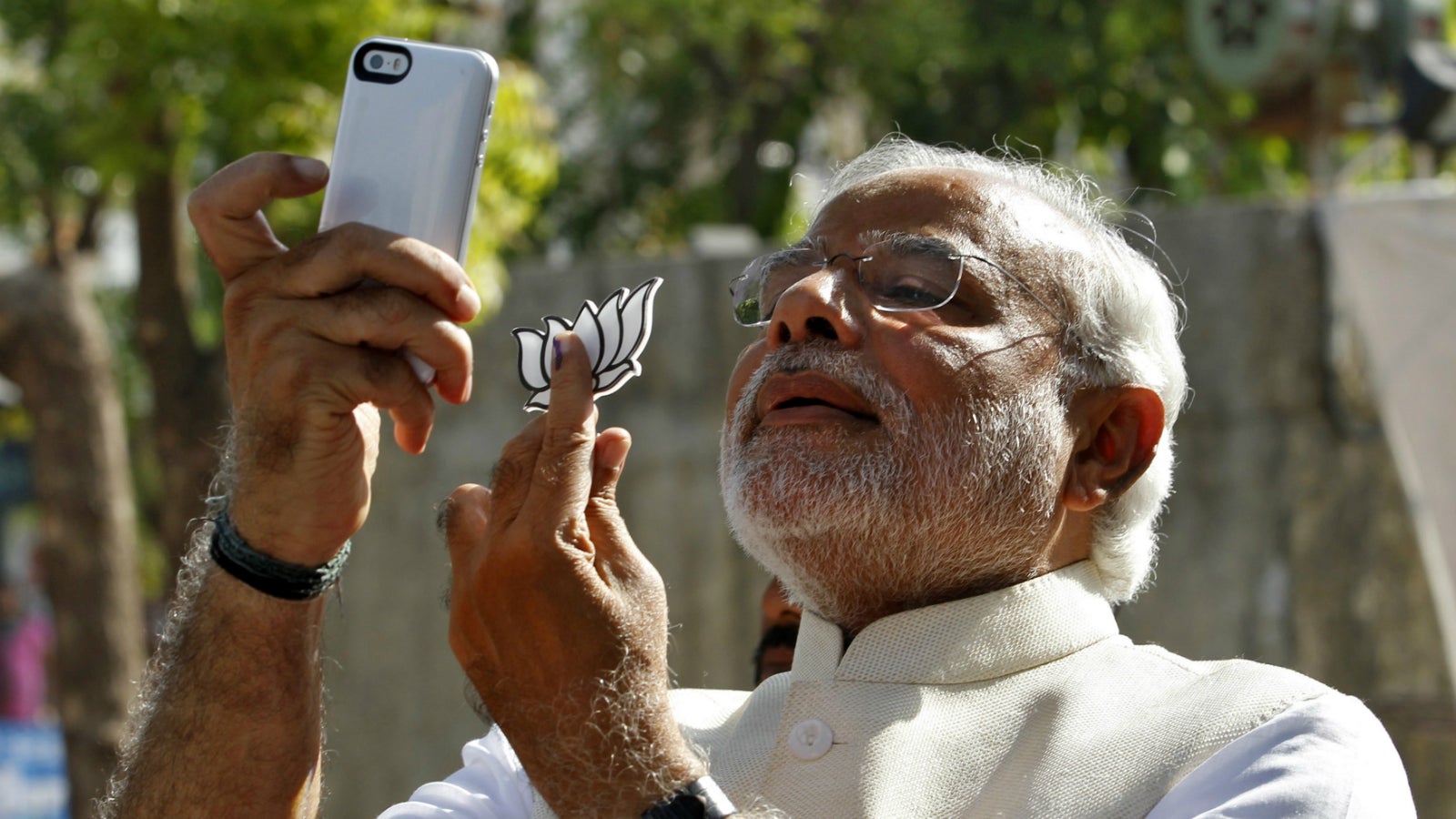

India’s online political battles are increasingly being fought in its many native languages—not English.
As the country prepares for the 2019 general election, a number of key politicians and political parties are getting on ShareChat, a fast-growing, indigenous social network that caters to new internet users in small-town India.
Unlike most of the popular social networks in India, this Android-based platform supports 14 Indian languages. It, pointedly, does not support English.
ShareChat allows people to scroll through a feed of user-generated content and like, share, and comment on posts, just like on Facebook. Users can also post content from the app directly to WhatsApp, India’s most popular messaging app, which has helped fuel the homegrown platform’s popularity.
Launched in October 2015, ShareChat claims a 20-fold increase in the number of monthly active users to 25 million over just the past 18 months.
“In recent weeks, we’ve had politicians and political parties looking to be ahead of the curve joining our platform,” said Berges Malu, head of public policy at ShareChat. “Our platform provides political leaders and celebrities the ability to reach out and interact with more people beyond the reach of global social media platforms, whose reach is limited.”
The chief ministers of three Indian states, all governed by prime minister Narendra Modi’s Bharatiya Janata Party (BJP), now have ShareChat accounts. These are Chhattisgarh’s Raman Singh, Madhya Pradesh’s Shivraj Singh Chouhan, and Maharashtra’s Devendra Fadnavis. Manoj Tiwari, a BJP parliamentarian from Delhi and a prominent singer of popular Bhojpuri language songs, too, is on ShareChat.
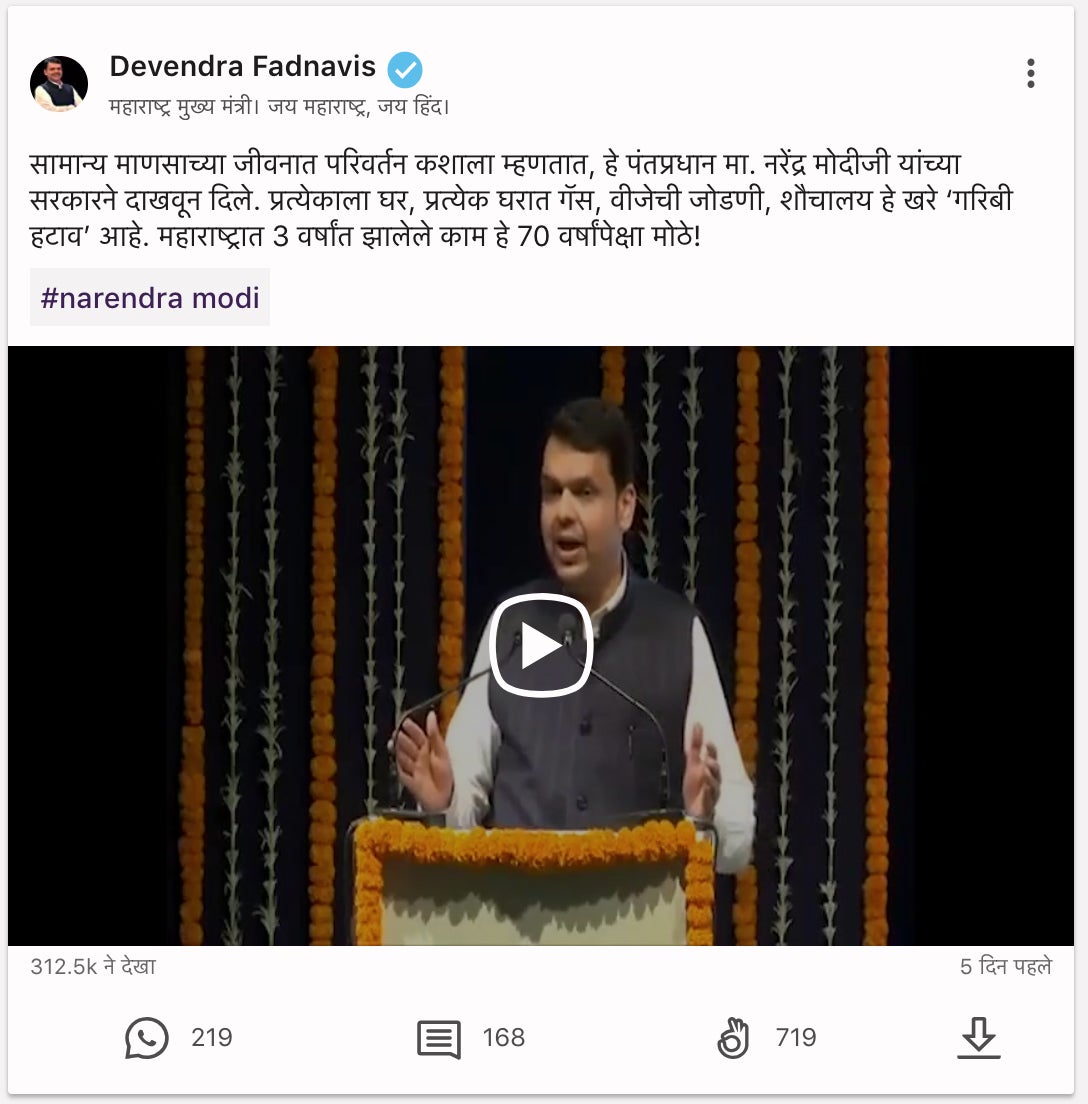
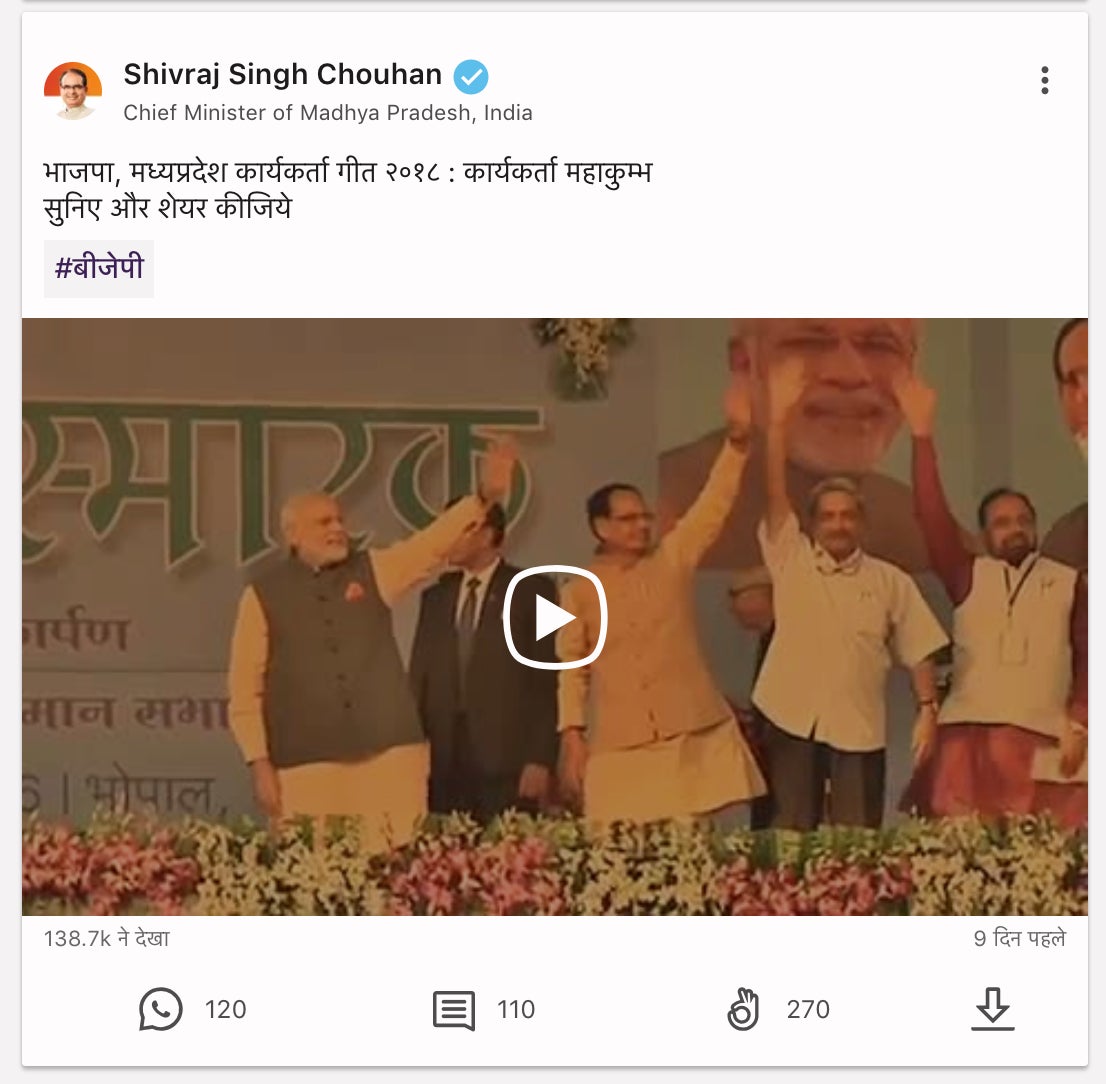
The three chief ministers are obviously looking to grab voters’ attention. After all, Chhattisgarh and Madhya Pradesh will elect new state governments much before the 2019 general election, while the Maharashtra assembly polls are due a few months after it.
India’s other major party, the Congress, isn’t far behind. It has pages for both its central social media team as well as those in various states.
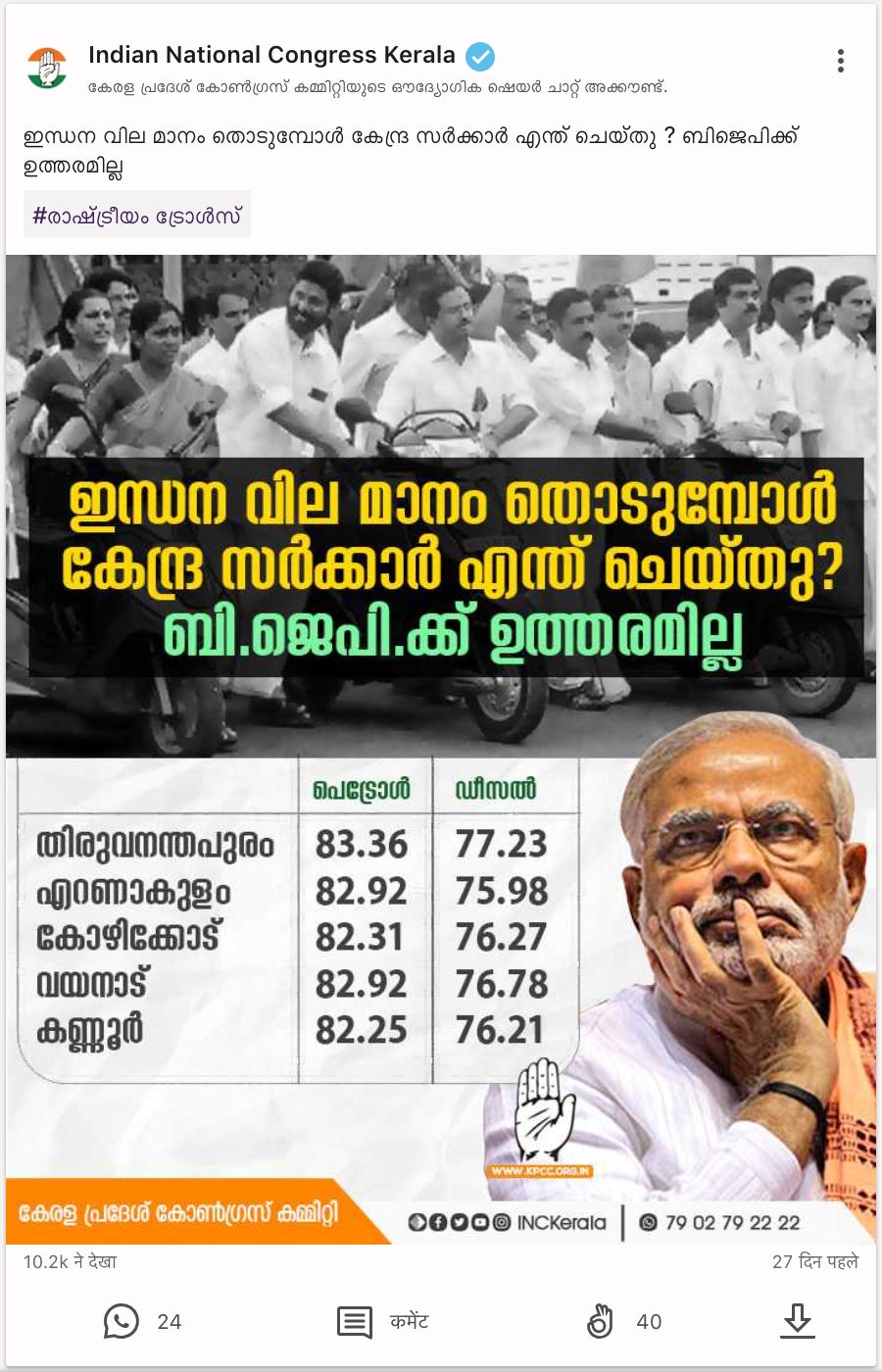
Investors have taken note. Last month, ShareChat raised $100 million (Rs720 crore) in funding, led by the Chinese venture-capital firm Shunwei Capital.
The language of politics
Over the past decade, increased access to smartphones and cheap data has brought millions of Indians online. Most of these have been native Indian-language speakers. A 2017 study by KPMG and Google predicted that by 2021, there would be 536 million Indian-language speakers online in the country, far outstripping the projected 199 million English speakers. This mostly reflects the country’s language demographics, with just around 10% of 1.3 billion Indians speaking English, but in relative levels of fluency.
The fact that ShareChat is not available in English is by design. The app had originally launched with an English option, which was later removed because “half of the people would pick English, but when they entered, they wouldn’t do anything,” Ankush Sachdeva, Sharechat’s CEO and co-founder, revealed in a podcast in January.
Upon interviewing some of these users, Sachdeva said, ShareChat found they “were just picking English because they have this feeling that all the apps built with non-English UI are not good quality…So we had to build this whole thing in their mind that there are good teams, good companies building out products for Indian languages.”
Often, users who are most comfortable in Indian languages can be alienated by mainstream platforms. “Unlike a Facebook or a Twitter, whose primary audience is the English-speaking audience of the country, a local-language social media platform or a WhatsApp group would cater more to a tier 2 or tier 3 population,” said an individual who has worked with major political parties, speaking anonymously.
Local-language groups, this person said, are generally where trends start. So if something were actually going viral in India, it would hit WhatsApp groups and local-media platforms first before becoming popular, he added.
Essentially, each social networking platform has its own unique place in the forming and spread of a political narrative or debate, according to Sadanand Dhume, a resident fellow at the American Enterprise Institute.
“Twitter is about moving the story, it’s not about moving voters, because there simply aren’t enough of them on Twitter,” Dhume told Quartz. Non-English groups on Facebook and WhatsApp are “where the electoral action is because that’s where the eyeballs are.”
On Sharechat, meanwhile, the three top languages being used are Hindi, Tamil, and Telugu.
A gold mine
While politicians themselves have officially joined ShareChat only recently, political content on the app has existed for much longer. This is often user-generated content or content re-posted from other social media platforms, besides some unofficial pages handled by parties’ social media footsoldiers.
Last December, the day after polls had closed in the Gujarat assembly election, four members of the ShareChat team published a blog post breaking down the app’s political activity during the contest.
They used analytics to chart negative versus positive mentions of the candidates in the election and even charted the two major parties’ fluctuations in popularity over the preceding two months. When the results were announced a few days later, ShareChat’s predictions of an incumbent BJP victory were borne out. The BJP ended up winning a majority of 99 seats to the Congress’s 61.
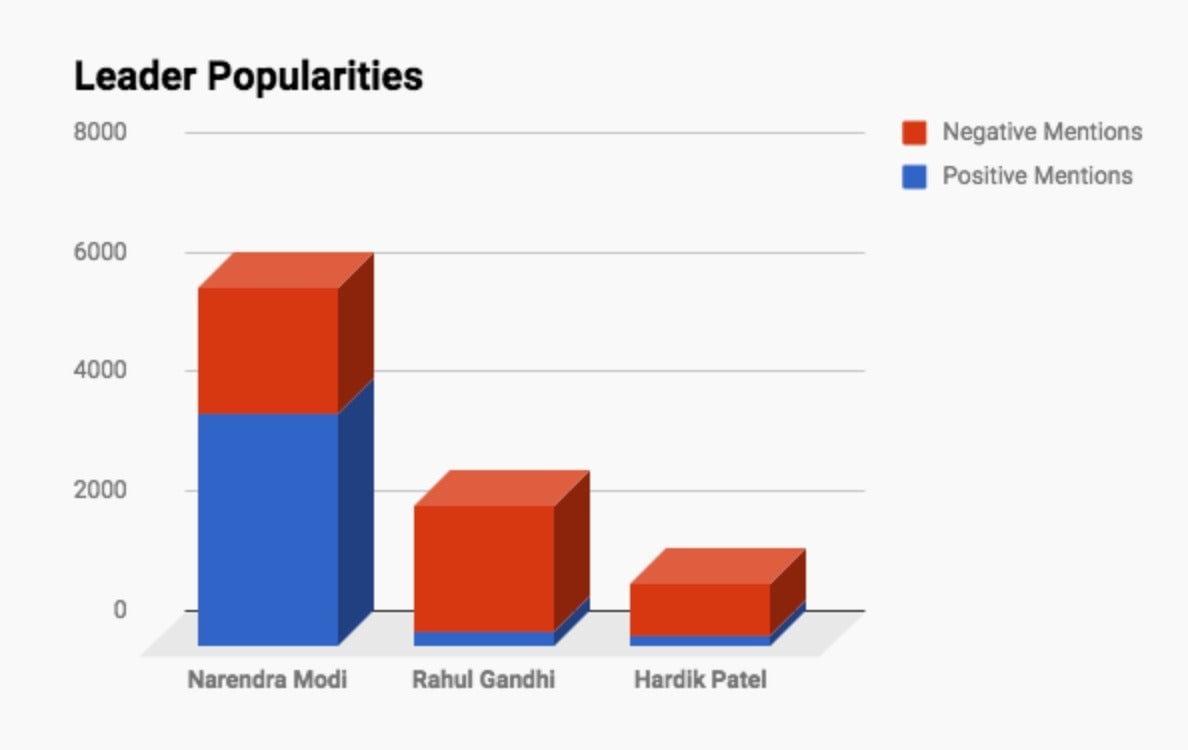
ShareChat, it seems, is sitting on some valuable data. “Political parties are interested in local-language social media platforms, or sort of these new India-first platforms,” the individual who has worked with major parties said. “There are use cases that you could generate, by sort of seeing what kind of political message is being shared over a certain district or geography, and to do some analytics to identify what is the sentiment that a certain party has over another party, or a person has over another person.”
But for ShareChat at the moment, he said, there “is still a while to go, because, at the end of the day, that critical mass doesn’t exist. They’re still a growing platform.”